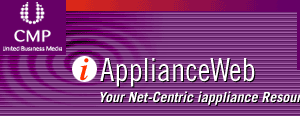



 |
 |
|
|
 |

|
||
|
|
|
|
|||

|
Netcentric View: SCO, Linux and the goose with golden eggs
By Bernard Cole
|
|||||||||||
In short, what will happen to the open source, standards-based goose-that-laid-the-golden-eggs that has driven the Internet and World Wide Web into virtually every aspect of our lives and into every embedded device and connected computer? Will such lawsuits such as these, which on their face may or may not have legal validity, kill that goose?
Consider the precedent such cases will have throughout computing. For example, the starting point for most "proprietary" RISC architectures is the work done under Department of Defense grants to Stanford University and the University of California, Berkeley. How much do you want to bet that there is not a lawyer someplace going back and looking at what portions of the RISC architecture preexisted the federal funding, hoping to find a loophole by which a university or a company could gain income from royalties?
And what about TCP/IP itself? Developed at Stanford University by Vinton Cerf and Bob Kahn, it was at the heart of the DoD funded ARPANET, an "inter-network" of proprietary and specialized networks designed to link the nation's universities and research labs together. Who does that belong to: all of us, to the government, to Stanford or some other university or to Cerf and Kahn themselves? If its use or any key element of it preexisted its use in the federally funded inter-network, would that not be a pretext for claims from which income could be derived?
Additionally, there are the many so-called "little languages," that have emerged out of the Internet such as TCL, Perl and others, the products of which are assumed to be in the public domain. Not only are these scripting languages used in dozens of Internet-oriented products, they are at the core of many products not directly related to networking. TCL, for example, is the mechanism that several embedded tool vendors, such as Wind River Systems, use to tie diverse tools and services together into a common integrated development environment. It is also at the core of at least one business-to-business web services offering.
Nor are the new Web Services frameworks that have been developed all that safe, based upon XML and Java on the one hand, and XML and C-sharp in the case of Microsoft Corp.
XML is pretty much a product of the World Wide Web and IETF standards-driven efforts. But is not just an extension of HTML, which old-timers I have talked to refer to derisively as "hypertext in a straight jacket." XML is based on the proprietary work done by dozens of hypertext companies in the 70s and 80s. They all had platform, OS and database specific meta-language expressions and meta-protocols that are just now being added back into XML, but which had to be stripped out to make HTML useable on any platform. How similar or dissimilar is the code used in these proprietary fully hypertextual programs to that in XML?
And Sun's Java and Microsoft's C-sharp could be in trouble here also. Pre-existing both were several other comparable efforts that look awfully similar. For example, there is AT&T's long forgotten C@+, a language which combined some elements of C, C++ and Smalltalk. The language was designed to be platform independent and it allowed the creation of downloadable virtual machines or run time executables in ways very similar to what Java and C-sharp do. And what about whoever has some legal rights to any or all of the Smalltalk language, many aspects of which served as the conceptual underpinning of both languages?
Certainly, the claims of the inventors and originators of a proprietary language, operating system, architecture or protocol should be considered. But what about the claims of the company to which they sold the rights, or the company to which that second firm eventually sold out to. Should all those claims be considered equally? Or should it be something like what has emerged in real estate law in states like California?
The owner of land over which there is a path by which there is access to public lands on the other side only has rights if it is established at the time of purchase or if the access is the result of work performed by the owner. If the original owner makes no effort to block access, a later purchaser does not have rights equal in magnitude to the first owner. They cannot, after the fact and after its use in the public domain, retroactively establish ownership, or claim misuse or illegal use.
The only company that I see as acting like an adult about this is IBM. This single company has thrown its corporate weight behind standards and open source and against proprietary offerings, while the rest of the industry has reverted to childhood: throwing things at one another, arguing over "who started it," and coming up with ways to get a bigger share of the pie than the other kids.
After a 50- or 60-year history of developing proprietary hardware, software and communications protocols -- and charging an arm and a leg for their use -- the company has gone the other direction, opting across the board for standards. Not only does it use standard and open source software throughout its products and services, it has moved some of its proprietary offerings, such as the internally developed platform and language independent integrated development environment, which is now in the open source domain as part of eclipse.org.
Its general philosophy seems to be not to try to make money on proprietary technology, but rather take standards and open source technology and make its profits building products that are faster, better, and easier to use. Long term, that seems to me to be the only way to ensure the long-term health of the connected computing environment upon which we all depend.
Bernard Cole is site leader and editor of iApplianceweb and an independent high technology editorial services consultant. He welcomes your feedback. Call him at or send an email to .
For more information about topics, issues and technologies mentioned in this story go to the flashing icon in the upper left corner on this page or go to the iAppliance Web Views page and call up the associatively-linked Java/XML-based Web map of the iApplianceWeb site.
Enter the appropriate key word, product or company name to list instantly every news and product story, product review and product database entry relating to the topic since the beginning of the 2002.
![]()

